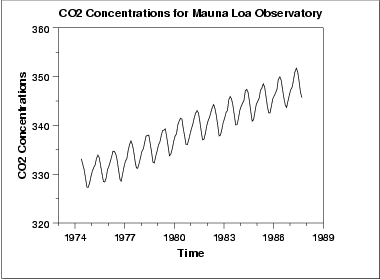6.4. Introduction to Time Series Analysis
6.4.4. Univariate Time Series Models
6.4.4.2. |
Stationarity |
A stationary process has the property that the mean, variance and autocorrelation structure do not change over time. Stationarity can be defined in precise mathematical terms, but for our purpose we mean a flat looking series, without trend, constant variance over time, a constant autocorrelation structure over time and no periodic fluctuations (seasonality).
For practical purposes, stationarity can usually be determined from a run sequence plot.
- We can difference the data. That is, given the series \(Z_t\),
we create the new series
$$ Y_i = Z_i - Z_{i-1} \, . $$
The differenced data will contain one less point than the
original data. Although you can difference the data more
than once, one difference is usually sufficient.
- If the data contain a trend, we can fit some type of
curve to the data and then model the residuals from that
fit. Since the purpose of the fit is to simply remove
long term trend, a simple fit, such as a straight
line, is typically used.
- For non-constant variance, taking the logarithm or square root of the series may stabilize the variance. For negative data, you can add a suitable constant to make all the data positive before applying the transformation. This constant can then be subtracted from the model to obtain predicted (i.e., the fitted) values and forecasts for future points.

The initial run sequence plot of the data indicates a rising trend. A visual inspection of this plot indicates that a simple linear fit should be sufficient to remove this upward trend.
This plot also shows periodical behavior. This is discussed in the next section.

This plot contains the residuals from a linear fit to the original data. After removing the linear trend, the run sequence plot indicates that the data have a constant location and variance, although the pattern of the residuals shows that the data depart from the model in a systematic way.

